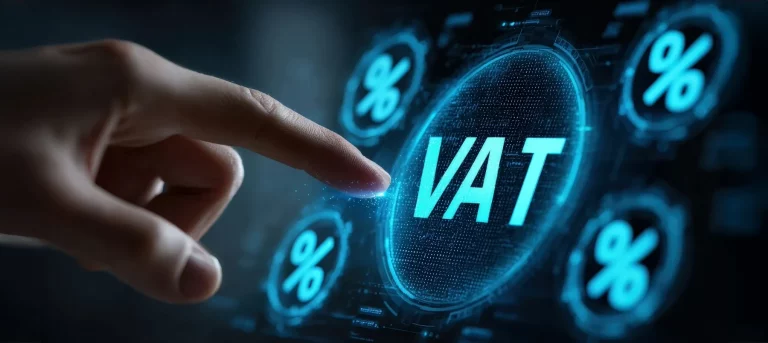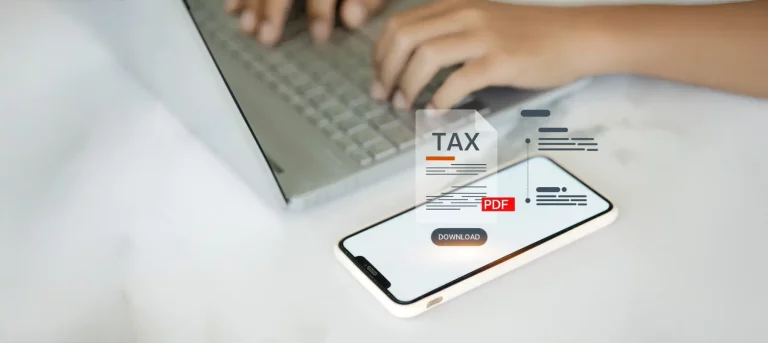Every organization in Belgium will have to deal with it sooner or later: e-invoicing and the associated regulations. Behind the scenes, however, everything revolves around one central standard:
In this article, we explain what exactly UBL BIS 3 is, why it is important for Belgian companies, how the Peppol network plays a role in this and how to make sure your organization stays compliant, now and in the future.
What can you read on this page?
What is UBL BIS 3.0?
UBL stands for Universal Business Language and BIS for Business Interoperability Specifications. Together they form the standardized structure for electronic invoices used within Peppol and many European networks. UBL BIS 3.0 is based on the European standard EN 16931 and defines how invoices are automatically processable by both humans and software.
For example, a UBL BIS 3.0 invoice contains:
- Customer and supplier data
- Order and reference numbers
- VAT codes and amounts
- Payment terms and bank details
- Detailed invoice lines (InvoiceLine)
Why is BIS 3.0 important for Belgian companies?
A PDF may look neat, but a computer can’t do much with it. UBL BIS 3.0 is machine-readable, allowing ERP and accounting systems in Belgium to process invoices automatically. This eliminates manual retyping, errors and delays.
Moreover, BIS 3.0 is the standard within Peppol, so when you invoice through this network, there is always a UBL file behind it. This ensures that your invoices can be processed automatically, regardless of which software your customer or supplier uses.
PDF vs. UBL: the difference
- PDF: visual, readable by humans, but not automatically processable.
- UBL: structured, readable by software, allows for automatic processing.
Often companies combine both: a PDF for visual inspection and a UBL for automatic processing.
Structure and technical highlights
UBL BIS 3.0 specifies, among other things:
- InvoiceTypeCode: for example, ‘380’ for a commercial invoice, ‘381’ for a credit note
- CustomizationID: the specific Peppol specification (urn:fdc:peppol.eu:2017:poacc:billing:3.0)
- ProfileID: the usage pattern (urn:cen.eu:en16931:2017#compliant#urn:fdc:peppol.eu:2017:poacc:billing:3.0)
- Unique identifiers for sender and receiver, such as EDI or GLN codes
- Detailed invoice lines with quantities, prices and VAT rates
Compliance and future in Belgium
In Belgium, UBL BIS 3.0 is mandatory for B2G invoicing, and as of Jan. 1, 2026, also for B2B invoicing between companies subject to VAT. Companies still using older UBL versions run the risk that their invoices will not be automatically accepted.
The advantage of BIS 3.0 is that it is internationally recognized and standardized, making exchange with customers and suppliers in other EU countries easy.
The UBL format is changing along with it
A key feature of Peppol is that it is an evolving standard. The UBL format may incorporate new specifications, elements or rules in the future to better reflect legislation, practical needs or technological developments.
For Belgian companies, this means:
- Keep software up-to-date: make sure your billing or ERP software receives regular updates that support new Peppol specifications.
- Flexible Peppol Access Point: choose a provider that actively grows with Peppol so that new rules are automatically available.
- Monitoring developments: stay abreast of new releases or modifications to Peppol so you can adjust processes in a timely manner.
In short: working with Peppol means building on a living standard. Those who organize this well are always ready for future updates and can easily incorporate new functionality into billing processes.
The role of Access Points and e-service providers
Many companies do not yet realize that a Peppol Access Point does not always take all the work off their hands. Some Access Points expect you to provide a valid UBL invoice yourself, acting primarily as a pass-through point.
The consequence: your IT team has to create, maintain and keep the UBL files up-to-date with the evolving Peppol standard itself. This can involve extra work, and any errors must be resolved internally.
Partnering with a reliable e-service provider makes this process much easier:
- The provider connects to your ERP, accounting or billing system.
- It ensures that the UBL is automatically built correctly, including all Peppol specifications.
- Both sending and receiving invoices is smooth and error-free, without your IT team having to constantly chase standards.
Currently, many companies are not yet considering this, as Peppol is not yet mandatory and the volume on the network is relatively low. By being prepared now, you ensure that your organization is ready for growth and future obligations, without additional pressure on internal teams.
Conclusion
UBL BIS 3.0 may not be visible to the end user, but it is at the heart of efficient, automatic and error-free e-invoicing. Those already working with BIS 3 will save time, avoid errors and comply with future obligations in Belgium and the EU.
FAQ:
It depends on the billing software or provider you use. Some systems automatically generate a Peppol-ready UBL file, while others provide a different format. In that case, you can convert the file to UBL yourself or work with an e-service provider that will automatically do this for you. This way you can be sure that your invoices are sent or received correctly, without extra work for your IT team.
Yes. It is mandatory for B2G invoicing today and from Jan . 1, 2026 also for all B2B invoices between Belgian VAT-registered companies.
Peppol BIS supports electronic invoices and credit notes in a standardized, machine-readable XML format.
- Legal compliance: invoices comply with Belgian and EU regulations.
- Less manual work: automatic processing in ERP and accounting systems.
- Faster payments: because invoices can be processed faster.
- Easy cross-border invoicing: compatible with customers and suppliers within the EU.
By keeping software up-to-date, working with a flexible Peppol Access Point and keeping up with developments in Peppol. An e-service provider can take most of this work off your hands, so you’re always up to the latest specifications.
Yes. Many companies send a PDF for visual inspection and a UBL for automatic processing. So you have both a readable invoice for people and a processable invoice for systems.
Download our free e-invoicing whitepaper!
HIGHLIGHTED ARTICLES



